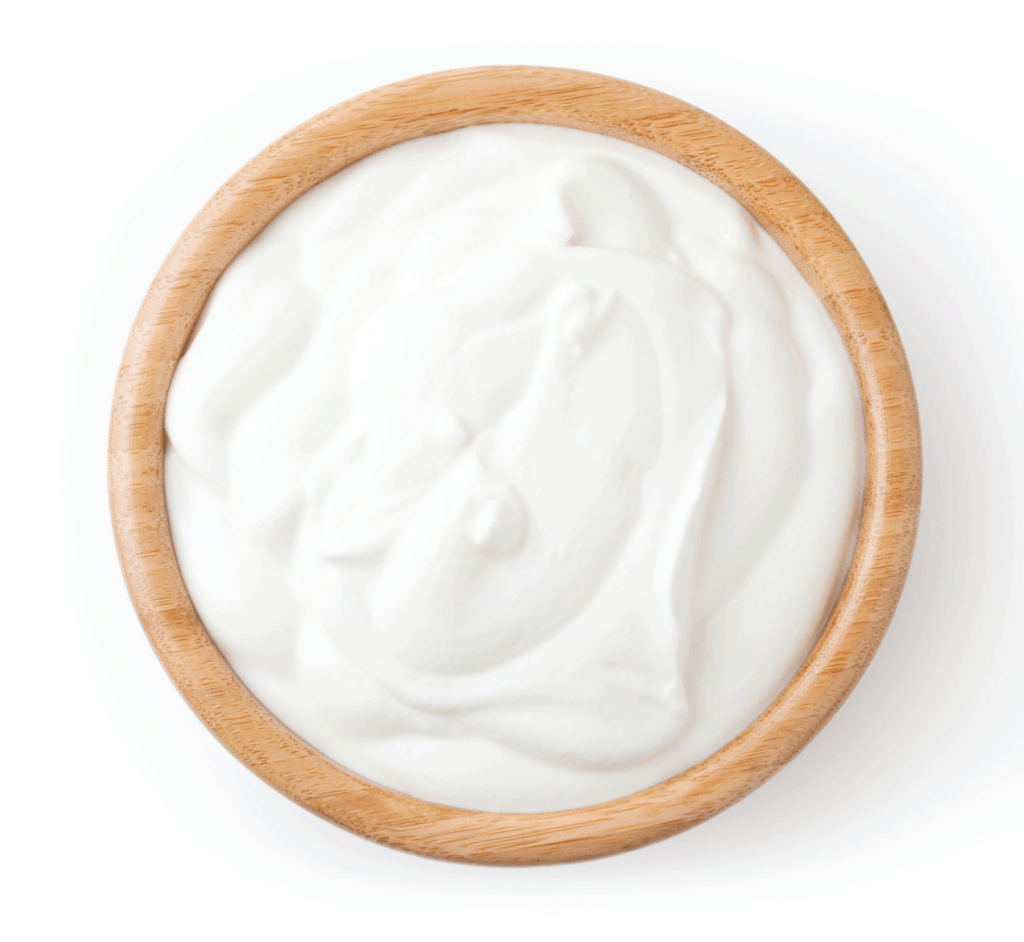
The tang of homemade crema—Mexican cuisine’s condiment counterpoint to French crème fraiche and their thicker cousin, American sour cream—derives from lactic acid in buttermilk, citric acid in lime juice, and the time it takes for both of those ingredients to act upon the heavy cream in the mix.
“And there is nothing like the tang of house-made crema!” says James Beard Award–nominated chef David Vargas, who owns Vida Cantina, a modern Mexican restaurant in Portsmouth, New Hampshire. Vargas grew up in Southern California where his mother, who is from Guadalajara, and his father, who is from a more rural part of the western Mexican state of Jalisco, were both police officers and together owned a taqueria.
For his crema, which he makes in gallons at a time, Vargas combines a ratio of five cups of heavy cream to two cups of buttermilk to 1/2 cup of lime juice in a sterilized container. He covers the container with cheesecloth, sets it on the counter, and lets the culture do its thickening work over the span of four days, longer during the colder New England winter. You refrigerate the crema once it’s thickened to your heart’s desire.
Just like the cream rises to the top of a bottle of non-homogenized whole milk, the crema at the top of the container, Vargas explains, is thicker than the crema on the bottom. Both derivatives serve different purposes in the kitchen. The thinner crema is easily drizzled over fish tacos or tamales and served with all types of enchiladas. The thicker crema can be mixed into raw salads as a binder, added to masa harina to make a dough for corn cakes or dumplings for soup, or sweetened and dolloped over fruit- or chocolate-based desserts.
Having a single jar of crema in your fridge will help you solve many of your condiment quandaries. Or you can just eat it with a spoon.
Berries with Honey Crema and Candied Lime Zest
Ingredients
- 2-3 limes
- 2 cups heavy cream
- ⅓ cup cultured buttermilk
- ½ cup plus 2 tablespoons sugar
- 1 tablespoon honey
- 3 cups fresh berries
Instructions
- ►Use a citrus zester* to remove the zest from the limes in long, thin strands. Set aside.
- ►Squeeze as many limes as it takes to measure 2 tablespoons juice. In a sterilized quart jar, combine lime juice, cream, and buttermilk. Cover the opening of the jar with cheesecloth and secure it in place with a rubber band. Set the jar on the counter to thicken for four days. When the crema is thick, replace the cheesecloth with a lid and store in the refrigerator for up to two weeks.
- ►To make the candied lime zest, place the zest in a small pan. Add an inch of water. Place pan over high heat and bring to a boil. Remove from the heat and strain out the water. Repeat that process two more times to remove any bitterness from the zest. Set the drained zest aside.
- ►Combine ½ cup sugar with ½ cup water. Place over medium heat. Stir until sugar dissolves. Add zest, bring to a simmer, and cook until the zest is translucent. Drain the zest from the simple syrup, saving the latter to make cocktails. Toss the drained candied zest with the remaining 2 tablespoons of sugar and spread out on a plate to dry overnight. Once dried, candied zest can be stored in an airtight container at room temperature for two weeks.
- ►To assemble the dessert, combine 1 cup crema with 1 tablespoon honey. Divide berries into four bowls. Top each with ¼ cup honey crema. Garnish each bowl with the candied zest and serve immediately.




